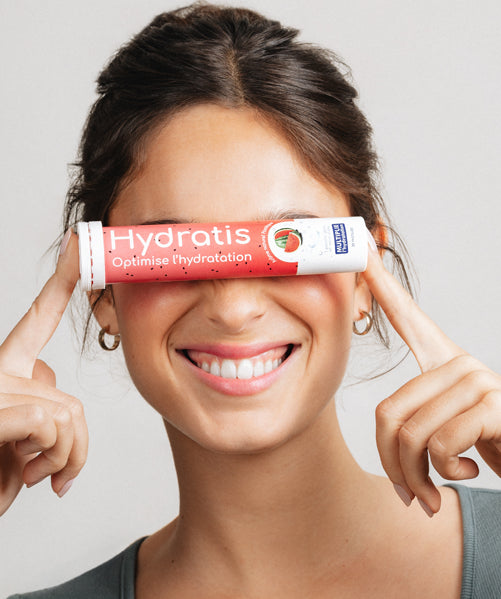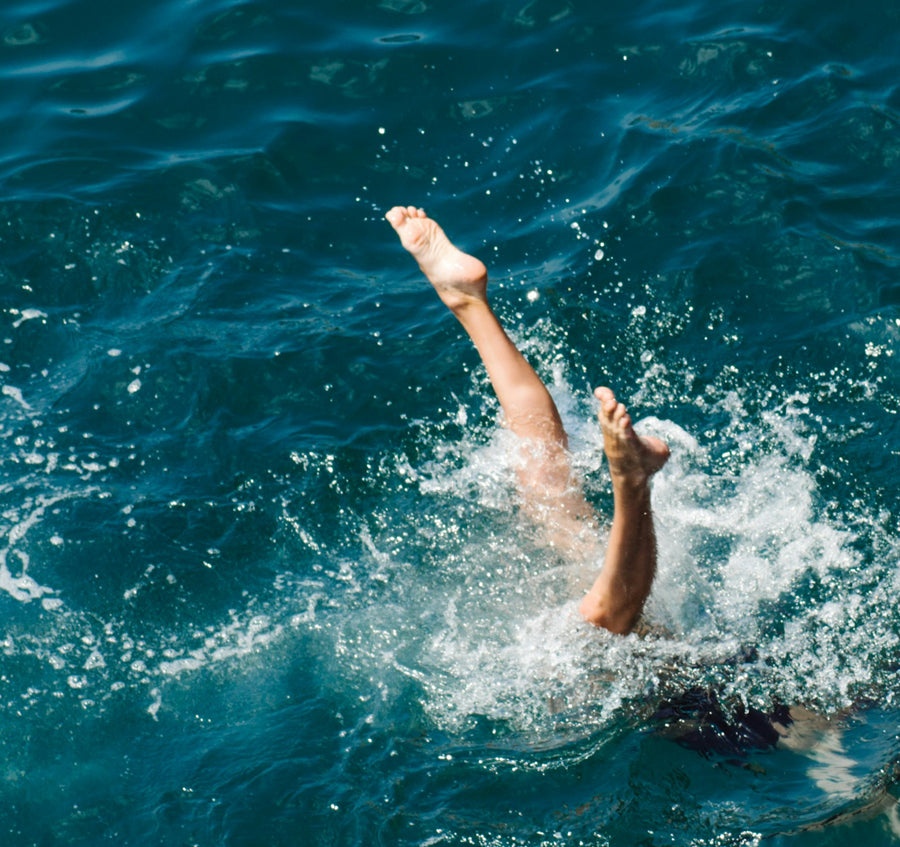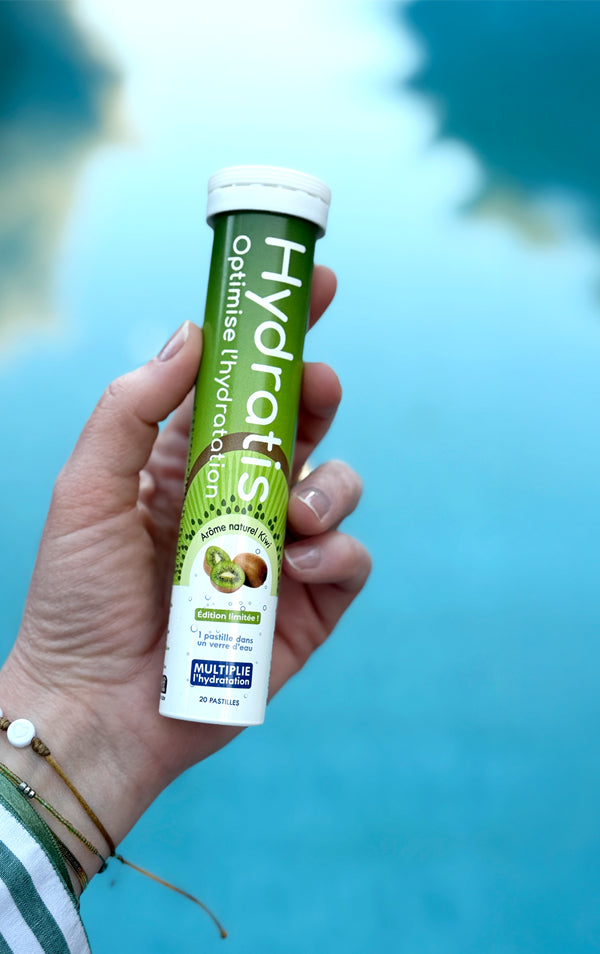Electrolytes are often mentioned when discussing exercise or hydration , but their function, benefits , and potential side effects sometimes remain unclear. What are electrolytes and what side effects can they cause if we don't follow a few guidelines? In this article, we'll explore in detail what electrolytes are and what effects they have on our bodies.
What is an electrolyte and why is it essential?
Electrolytes are the ions (atoms with extra or less electrons that are therefore electrically charged) circulating in the blood. The main electrolytes are sodium (Na+) found in table salt in particular, potassium (K+) found in bananas and dried fruits, calcium (Ca2+) found in dairy products and legumes, and magnesium (Mg2+), found in seeds and nuts.
Electrolytes have several essential roles in our body:
First, they ensure the maintenance of water balance : electrolytes, such as sodium and potassium, regulate water balance by controlling the movement of water between cells and fluids. Through osmosis and the action of the kidneys, they maintain optimal hydration , essential for proper cellular function, blood circulation, and temperature regulation.
Furthermore, they also contribute to muscle and nerve function. Nerves transmit electrical impulses through a mechanism called action potential, which depends on electrolytes. These impulses then control muscle contraction and therefore impact the muscular system. Electrolytes thus promote these transmissions and therefore their efficiency.
And they will ensure blood pressure regulation, just as each ion has an impact on blood pressure regulation. Sodium will have the effect of increasing blood pressure, unlike potassium and magnesium, which reduce it. Calcium, on the other hand, stabilizes it. It is therefore important to maintain a balance between these ions to ensure optimal blood pressure and prevent hypertension.
Electrolyte balance is fundamental for your body , it regulates vital functions such as hydration , muscular, nervous or cardiac activity.
Who can consume electrolytes?
Electrolytes are suitable for all types of people, however, there are three groups that are mainly targeted, these are athletes , sick people and those who live in hot climates.
During intense or prolonged exercise, athletes lose significant amounts of sodium, potassium, and other electrolytes through sweat. Replenishing mineral stores after exercise helps prevent dehydration, muscle cramps , and fatigue.

When you vomit , have diarrhea , or have a fever , your body loses fluids and electrolytes. This can lead to imbalances , making it difficult to regulate blood pressure and keep your muscles and heart functioning properly. Electrolytes will help you rehydrate and restore this balance.
In hot weather , sweating increases to regulate body temperature , leading to increased loss of electrolytes . In these conditions, it is essential to replace these minerals to avoid dehydration and associated disorders, such as cramps and fatigue.
Side effects of electrolyte imbalance
What are the risks of an electrolyte overdose?
Hypernatremia , characterized by the presence of an abnormally high level of sodium in the blood, can cause fatigue and muscle weakness , a feeling of intense thirst , which is accompanied by some confusion, headaches . The dangers of electrolyte deficiency are numerous and can include neurological disorders, seizures, and in rarer cases, cardiac complications that can lead to respiratory arrest.
On the other hand, hyperkalemia is an excess of potassium in the blood and can have serious health consequences, leading to heart problems , for example. Indeed, since potassium is responsible for the electrical signals sent to the heart, an excess can then cause irregularities in the heart rhythm, with the risk of tachycardia or cardiac arrest.
Hypercalcemia , or excess calcium in the blood, poses long-term kidney risks, including kidney problems. It is important to know that kidney stones affect 10% of the population and can be caused by excess calcium. If these problems are not addressed, in the long term, there are risks of urinary tract infections, kidney damage, and ultimately kidney failure.
It is possible to detect excessive electrolyte consumption thanks to certain warning signs such as a feeling of general weakness, muscles that tire quickly, nausea, headaches, or even numbness.
Risk factors should also be considered. People with kidney problems, chronic diseases like diabetes , or heart disease may be at higher risk for electrolyte imbalance . This is also the case for taking certain medications that can disrupt electrolyte balance. It is also important to avoid excessive mineral intake, such as energy drinks.
What are the symptoms and risks of electrolyte deficiency?

Just like excess electrolytes, electrolyte deficiency poses health risks. Symptoms are similar to those discussed above: fatigue, headaches, cramps, vomiting, and confusion.
The two main deficiencies are:
- Hyponatremia, characterized by a low level of sodium in the blood , manifests itself by symptoms such as general weakness, concentration problems, headaches, nausea, vomiting, cramps, or more seriously, convulsions or coma. The dangers that result from it are numerous, the most serious being neurological disorders, convulsions, cardiac risks and respiratory arrest.
- Hypokalemia, a potassium deficiency, can be recognized by muscle weakness, cramps, heart palpitations, constipation, or numbness. The consequences can be serious, particularly on the heart, with irregular heartbeats, low blood pressure, or even cardiac arrest.
Hyponatremia and hypokalemia can occur, for example, in athletes when they consume only water during exercise. To put it simply, sweat contains mostly water, but also sodium, potassium, and certain other electrolytes. If athletes only compensate for water losses , then there will be an electrolyte deficit, meaning not enough sodium or potassium, among other things.
If one or more of the symptoms appear, do not hesitate to consult a healthcare professional to confirm this deficiency and obtain appropriate treatment.
Electrolyte drinks: what to choose and how to consume them?
What is an electrolyte drink?

An electrolyte drink is a drink that aims to provide minerals that the body loses through sweating or dehydration .
Electrolyte drinks and isotonic drinks are often confused, but what are the differences? The two types of drinks are not the same. Isotonic drinks are intended for athletes; they are there to rehydrate but, above all, to provide energy during physical activity. Electrolyte drinks have a more varied use: whether for athletes, people who are ill, or simply during hot weather, replenishing electrolytes is very important.
It is in this context that we created Hydratis, a solution composed of a little sugar, electrolytes and trace elements which allows everyone to stay hydrated as well as possible, whatever the situation.
When and how to consume electrolytes?
Electrolyte consumption is recommended before, during, and after physical activity. It's important to prepare your body for exercise, as well as keep it hydrated and avoid the risk of cramps during exercise. It's also important to rehydrate your body after exercise to promote better recovery.
Drinking Too Many Electrolytes: Is It Dangerous?
Excessive electrolyte consumption can cause adverse health effects, so it's recommended to follow the directions on Hydratis tubes. The solution can be taken daily, at a rate of 2 to 5 lozenges per day, depending on your activity.
Although present in small amounts in our bodies, electrolytes are important for maintaining many vital functions such as regulating fluid balance, muscle contractions, and even heart rate. A deficiency or excess of electrolytes can cause a variety of symptoms, ranging from fatigue and muscle weakness to cramps, spasms, and heart rhythm disturbances. To avoid these discomforts, it is essential to stay properly hydrated with good quality water and maintain a varied and balanced diet. In cases of high fluid expenditure, Hydratis lozenges can offer a quick and effective solution to restore the body's electrolyte balance and support its efforts.






